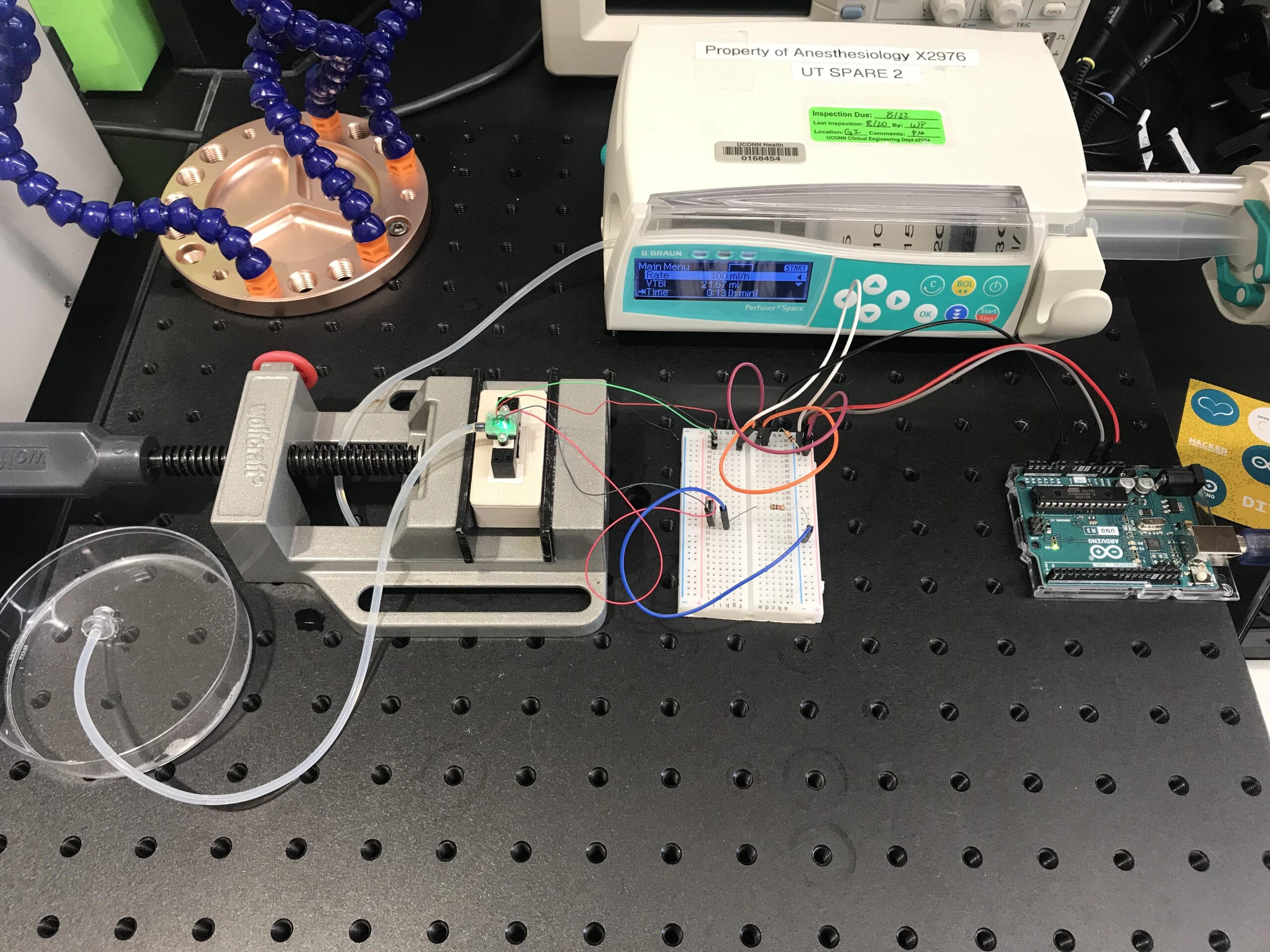
Figure 1

Figure 2

Team 16
Team Members |
Faculty Advisor |
Heather Brown |
Dr. Kazunori Hoshino Sponsor UConn Biomedical Engineering Department |
sponsored by
Sponsor Image Not Available
Hydrocephalus is a neurological condition where cerebrospinal fluid (CSF) accumulates in the ventricles of the brain which can lead to death if left untreated. Typically, hydrocephalus is treated using a ventriculoperitoneal (VP) shunt, which drains excess fluid from the ventricles to the peritoneal cavity where the fluid can be properly absorbed. VP shunts are currently monitored for malfunctions using invasive, in-comprehensive, and expensive screening methods; however, only 50% of individuals screened have a shunt malfunction. Thus, a new method is needed to quickly and accurately monitor shunt functionality to prevent individuals from undergoing unnecessary screenings. In this project, a novel smart shunt system was developed to measure the flow rate of CSF to monitor shunt functionality. The design utilizes a reflective polydimethylsiloxane (PDMS) cantilever beam coupled with an optical detection system. Using infrared communication, the flow rate measurement is wirelessly transmitted through the skin to an external receiver. The external receiver can be connected to a bluetooth device to relay sensor readings to both the patient and physician. The results recorded from lab testing demonstrate that an implantable flow sensor is feasible for monitoring ventriculoperitoneal shunts. This implantable flow sensor can serve as a practical, quick, and less expensive method to monitor VP shunt malfunctions.
